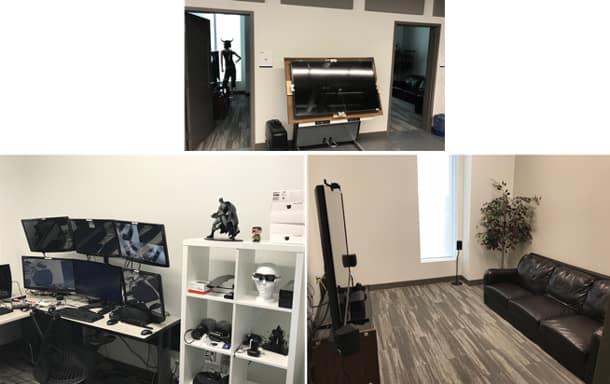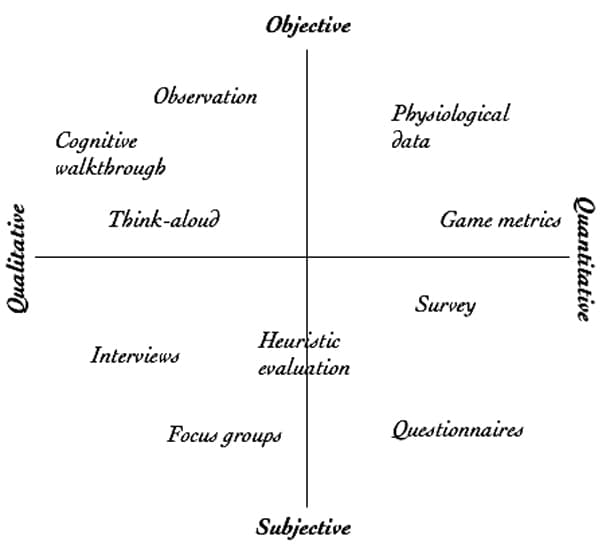The games industry is a behemoth of digital media, inspiring and entertaining hundreds of millions of players around the world. It is the largest entertainment industry in the world, growing at a rate of about 15% per year, with Newzoo projecting 2018 worldwide spending on games to be $137.9 billion in US dollars. The composition of this industry is incredibly varied, ranging from independent developers working on small mobile games to major commercial releases larger than Hollywood films in terms of production budgets and revenue. For example, Rockstar’s Grand Theft Auto V earned $800 million USD within the first 24 hours of its release—more than what many blockbuster movies make worldwide throughout an entire theatrical run. Perhaps it follows naturally from this broad appeal and the highly dynamic nature of the medium that game development is remarkably multidisciplinary when compared to most other industries. A single studio often employs designers, programmers, 2-D and 3-D artists, writers, hardware specialists, UX researchers, QA personnel, and management all working together in service to the goal of creating truly astonishing experiences. As the industry grows, competition intensifies; while game consumers may be spoiled for choice, this leads to stricter standards among ever-more demanding players.
Modern game development is becoming increasingly focused on enhancing player experiences, which means UX careers in the gaming world are in-demand and education is at-hand. Furthermore, those interested in turning their passion of video games into a career will find that there are unique ways of thinking about goals and methodologies when doing UX research for video games. Finally, the way UX research teams are set up in gaming companies may be different than in other industries.
How the Video Games Industry Has Evolved
As a result of advances in technology and an increasingly competitive client, the games industry has changed significantly over its lifespan, undergoing drastic shifts in approximately the past five to ten years. These changes include a shift in demographics, as gaming evolved from a niche pastime to a mainstream hobby; changes in distribution, as large publishers have experienced an invasion of their monopoly by independent developers and smaller firms; and the introduction of new business norms with the advent of mobile and free-to-play monetization models. Because this industry is dependent on business-to-consumer marketing, the success of each game relies on whether users would have a fulfilling experience interacting with the product. Moreover, the removal of technological barriers and the increased availability of development technologies (e.g., commercial engines) have allowed game studios to rethink their design ideology. Where developers were once focused on limitations imposed by memory or display restrictions, resources have been redistributed to consider not just the characteristics of the device, but those of the user on the other side of the screen. This paradigm shift is evident in the changing landscape of industry events and special interest groups; members of the International Game Developers Association (IGDA) founded a special interest group for Games User Research (GUR) in 2009, and the annual Game Developers Conference (GDC) in San Francisco added a new conference track for Game UX in 2017.
The massive growth in the interactive entertainment industry has been accompanied by an equal acceleration in the popularity of educational and training programs offering related degrees and courses. While the number of similar programs that exist globally is hard to estimate, the United States serves as a good indication of worldwide interest. In each of the 50 states, digital media and game development professional certificates, undergraduate, and graduate degrees are offered by more than 390 institutions, with a 50% increase in program availability since 2009. It is important to note here that UX education is critical for all types of programs, whether they are focused on programming, design, or art. There are often several courses on human-computer interaction (HCI), user centered design (UCD), interaction design (IxD), and user research (UR) focusing on various aspects of user experience in game development. For example, I am associated with the Game Development and Entrepreneurship program at the University of Ontario Institute of Technology (UOIT) in Canada (Figure 1). Our current program includes four design courses (ranging from introductory to advanced principles), one course on UX research, and one course on HCI. In a rapidly advancing field such as digital gaming, it is important that educational materials remain relevant to students as the state-of-the-art moves forward. Educators often try to achieve this by including a range of real-world examples to improve students’ ability to comprehend the importance of theoretical concepts.

How UX Research Goals Differ in Gaming
Modern video games offer different ways of interaction and the potential to deliver a better player experience. Thus, an accurate understanding of target players and their gameplay experience can help identify and resolve potential problem areas during development, leading to a better player experience and arguably greater game review scores and sales. Hence, UX researchers in the gaming industry seek to improve the gameplay experience by conducting usability and UX evaluation on in-development titles. They utilize user research methods—such as behavioral observation, interviews, questionnaires, and heuristic evaluation—from HCI, market research, and psychology (see Figure 2).

However, these well-established user research methods cannot often be used in the same way for formative evaluation of the player experience. This is due to the specific characteristics of video games. For example, the purpose of gaming is usually in the process of playing, not in the final result (efficiency vs. engagement); game designers intentionally embed challenges into the game loop. So, while productivity applications aim to minimize challenges (ease of use vs. flow) and are often built around functionality, games set out to create emotions and mood (function vs. mood). Therefore, I believe understanding the specific characteristics of video games is the first step and a key skill for becoming a UX researcher in the game industry.
Due to these specific characteristics of video games, user research methods have been adapted and evolved to better fit with game development needs. These methods aim to provide a mixture of qualitative and quantitative approaches for UX researchers to choose from depending on their user study setup and needs. Understanding the advantages and limitations of each user research method and identifying the best mixture of these methods are another key skill (and a challenging one to master) for a UX researcher in the gaming industry (Figure 3). Therefore, teaching user research methods, their adaptations, and the triangulation of them for UX research in gaming are fundamental components in any education program.

The next fundamental skill is tying together the results of quantitative and qualitative user research data and blending the results from each into a meaningful report for game developers. For example, combining data from observing players’ gameplay videos with questionnaires or interview results and in-game movement data into a single report is not straightforward because the underlying data is often in different formats. Here, visualization techniques can facilitate the understanding of relationships among these data sets, and various visualization techniques have been introduced in games UX research (Figure 4 shows one example). This means reporting and visualization techniques are also essential in UX research training.

Two UX Research Career Paths
Beyond acquiring necessary training and knowledge, deciding on a career pathway can be quite daunting for UX researchers entering the game industry. Hence, understanding the organizational structure in games UX research would be a valuable advantage. Generally speaking, there are two type of roles, each with its own hierarchy within a UX research team at a game company: (a) research, which covers all the different aspects of designing, conducting, and reporting user studies; and (b) support, which provides and handles resources such as recruitment and lab management associated with performing UX research. It is important to note that depending on the size of a game studio and the organizational model of its UX team, these roles can be carried out by a team or all by a single person. Obviously, different organizational models have their own advantages and challenges. For example, having multiple people distributing tasks means a faster optimization of the process, the development of certain skill sets, more support from team members, and the ability to carry out activities in parallel. On the other hand, being part of a smaller team could mean more freedom to adjust processes, better contextualization of the researcher’s level of knowledge about the product, and enhancement of communication between researcher and developer. The key point here is learning about different organizational models is important as this knowledge can help a researcher understand a route they want to take.
Conclusion
To summarize, I would like to highlight the resources that are available for students, educators, and researchers that are beneficial in games UX research. As I mentioned earlier, the IGDA founded a special interest group on games user research. Their website hosts many videos (among other resources) from their yearly summits featuring industry and academic experts presenting lectures on various topics. They also run a Discord channel that is intended to provide a place where the community can come together and be able to easily communicate with each other. Moreover, there is also a book (Games User Research) that provides a compendium of insights from more than 40 experts on UX research in games. The book covers best practices on how to plan user research, how to obtain the actionable insights from users, and how to conduct UX evaluations.
